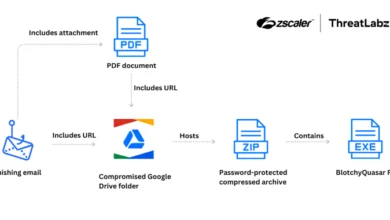Navigating the Maze: A Guide to Open Source Licenses and Security Considerations

Open source software (OSS) powers a vast amount of the modern digital world, from web servers to complex applications. While its collaborative nature and cost-effectiveness are attractive, integrating OSS comes with critical responsibilities. Understanding Open Source Licenses and Security Considerations is not just good practice; it’s essential for avoiding significant legal entanglements and security breaches. Failing to grasp the nuances of these licenses, which are legally binding agreements, can expose your organization to substantial risk.
This guide delves into the crucial aspects of managing open source software, focusing on both the legal framework of licenses and the inherent security challenges. Let’s explore how to leverage the power of OSS safely and effectively.
Understanding the Open Source License Landscape
At its core, an open source license grants permissions to use, modify, and distribute software under specific conditions. However, these licenses are far from uniform. They range from highly permissive licenses (like MIT or Apache) that impose minimal restrictions, to strong copyleft licenses (like the GPL) which require derivative works to also be released under the same open source terms.
Key points about OSS licenses include:
- Legal Obligations: Every license comes with terms you *must* adhere to. These can include attribution requirements, making source code available, or prohibiting certain uses.
- Compliance is Non-Negotiable: Treating licenses lightly is a major legal risk. Non-compliance can lead to lawsuits, financial penalties, loss of intellectual property, and potentially being legally compelled to open source your proprietary code.
- Variety and Complexity: With hundreds of different licenses in existence, understanding the specific obligations of each component you use is paramount. Resources like the Open Source Initiative provide definitions for approved licenses.
[Hint: Insert image/video explaining the difference between permissive and copyleft licenses here]
License Compatibility: The Integration Challenge
A significant challenge arises when combining OSS components under different licenses, or when integrating OSS with proprietary code. Incompatibilities can create complex legal situations. For example, using a strong copyleft component (like GPL) within a proprietary product might force you to release your entire product’s source code.
Organizations must:
- Establish clear policies on acceptable license types.
- Carefully vet the licenses of all OSS components *before* integration.
- Understand how different licenses interact, especially regarding derivative works.
Open Source Security Considerations: Beyond the License
While licensing deals with the legal right to use the code, security addresses the risks inherent in using code written by others. Open Source Licenses and Security Considerations go hand-in-hand because the very nature of OSS – readily available source code – can be exploited if vulnerabilities exist.
The primary security risk comes from vulnerabilities within the open source components themselves or their dependencies (other libraries they rely on). High-profile incidents like the Log4j vulnerability demonstrated how a single flaw in a widely used component could have catastrophic, widespread impact.
Common Security Pitfalls with OSS
- Known Vulnerabilities (CVEs): Using components with documented Common Vulnerabilities and Exposures (CVEs) that haven’t been patched.
- Outdated Components: Neglecting to update OSS libraries means missing out on crucial security fixes.
- Dependency Chains: Vulnerabilities can hide deep within indirect dependencies (dependencies of dependencies), making them hard to track manually.
- Insecure Configurations: Sometimes the component itself is secure, but it’s implemented or configured insecurely.
[Hint: Insert image/video illustrating a dependency chain and potential vulnerability points here]
Best Practices for Managing OSS Licenses and Security
Proactive management is key to mitigating the risks associated with open source software. Relying solely on developer awareness is insufficient; robust processes and tools are necessary.
Here are essential best practices:
- Inventory Your OSS: Maintain a complete and accurate Software Bill of Materials (SBOM) listing all OSS components and their licenses used in your projects.
- Automated Scanning (SCA): Implement Software Composition Analysis (SCA) tools. These tools automatically scan your codebase and dependencies to identify components, detect associated licenses, check for compliance issues against your policies, and flag known security vulnerabilities. Find more information about securing your software supply chain at resources like our internal guide on secure development.
- Establish Clear Policies: Define which licenses are acceptable, restricted, or forbidden within your organization. Create security standards for vetting and updating OSS.
- Conduct Regular Audits: Periodically review your OSS usage for both license compliance and security posture.
- Keep Components Updated: Implement a process for regularly updating dependencies to their latest stable and secure versions.
- Educate Development Teams: Ensure developers understand the importance of license compliance and secure coding practices when using OSS.
Conclusion: Balancing Innovation with Diligence
Open source software offers tremendous benefits for innovation and speed-to-market. However, navigating the complexities of Open Source Licenses and Security Considerations requires diligence and a proactive approach. By understanding license obligations, managing compatibility, scanning for vulnerabilities, and implementing robust management practices, organizations can confidently harness the power of OSS while safeguarding their legal standing and security posture. Ignoring these aspects is not an option in today’s software development landscape.

